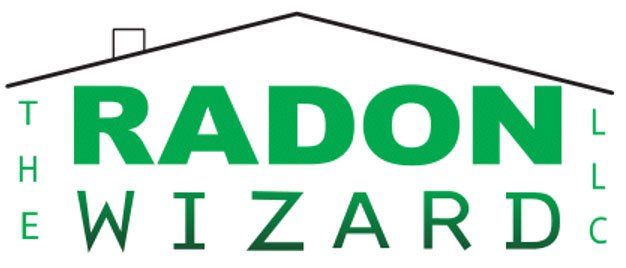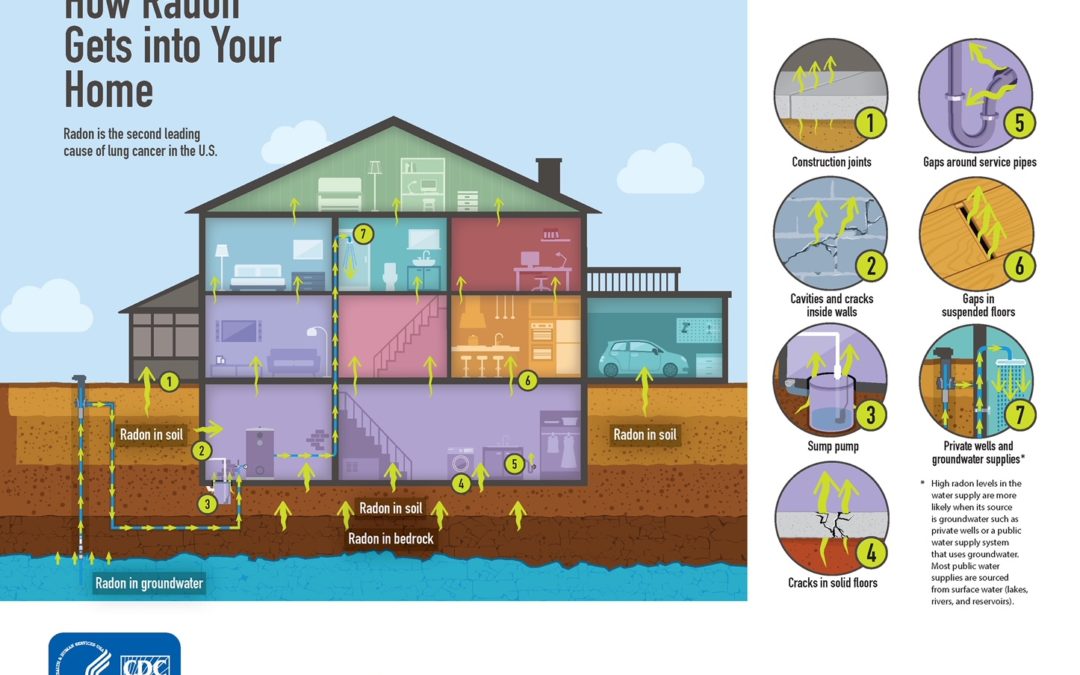Radon is an invisible, odorless, and tasteless gas that is both natural and radioactive. It is formed from the breakdown of uranium in soil and rocks, which can then enter buildings through cracks in foundations or other openings. Radon is one of the leading causes of lung cancer and has been found to be present in homes, schools, offices, and other indoor places.
The Environmental Protection Agency (EPA) estimates that one out of every 15 homes in the United States has radon levels above 4.0 picocuries per liter of air (pCi/L), which is the action level set by the EPA. The National Safety Council (NSC) recommends home radon tests to ensure that no home has a dangerous level of radon inside. Radon levels vary greatly from house to house, and typically higher concentrations are found in basements or lower levels than on upper floors; however, high levels have been known to occur at any level within a structure.
Radon gas enters a building through gaps or cracks in foundation walls, floor slabs, windowsills, wall cavities. around plumbing pipes, crawlspaces, and sump pump pits. Radon can also seep into a building from well water if it contains uranium or other naturally-occurring radionuclides such as radium. Radon from well sources are typically not thought to be an issue in Central Ohio though. Air pressure differences between indoors and outdoors also play a role in moving air containing radon into buildings from surrounding soils – this phenomenon is called the ‘stack effect’ because it is similar to how warm air rises up a chimney stack due to warmer interior temperatures compared with outside temperatures.
In addition to basements and lower levels of buildings being prone to having higher concentrations of radon gas, some areas across the country have higher than average concentrations as well due to geological factors such as soil composition and geology combined with other contributing factors such as weather patterns which can cause atmospheric changes.
When it comes to minimizing your exposure to dangerous levels of radon gas, it’s important to test your home, so you know what your risk level is for elevated exposure within your own residence or workplace any time you move into new premises. Testing can be done easily using do-it-yourself kits available online or at local hardware stores, along with professional testing services offered by a licensed inspection company who use specialized testing equipment & methodology proven reliable by EPA Standards. If you test at or above the EPA Action Level of 4.0pCi/L, then the installation of a properly designed radon mitigation system based on the specific needs of your home will help reduce readings below this threshold.
Overall long-term exposure above 4.0pCi/L poses significant health risks, so having knowledge about where the most common sources exist helps people better understand how best to protect themselves and maintain safer living environments for their families. Following steps outlined by EPA, NSC , and State Public Health Departments, along with taking appropriate measures when hiring professional inspection companies can go a long way towards reducing exposure risks.

